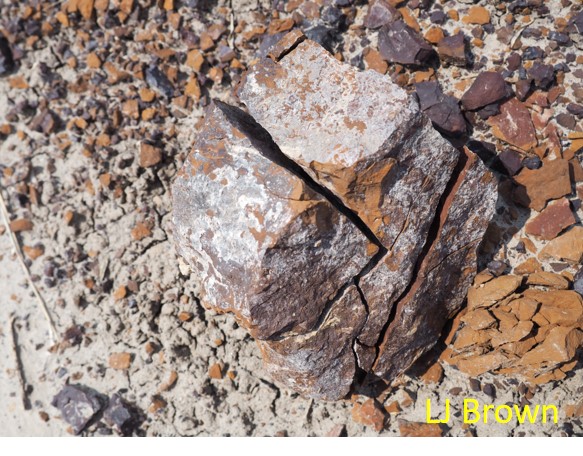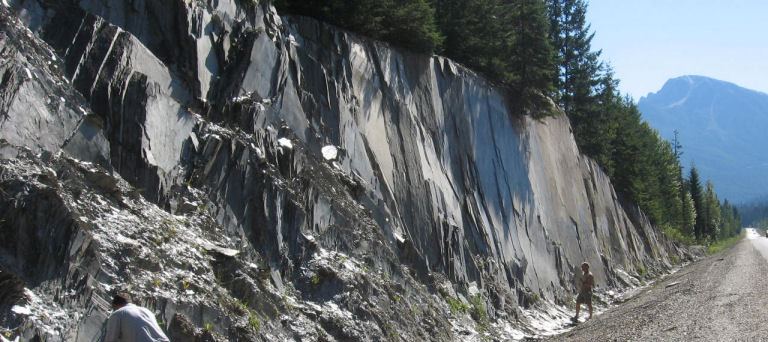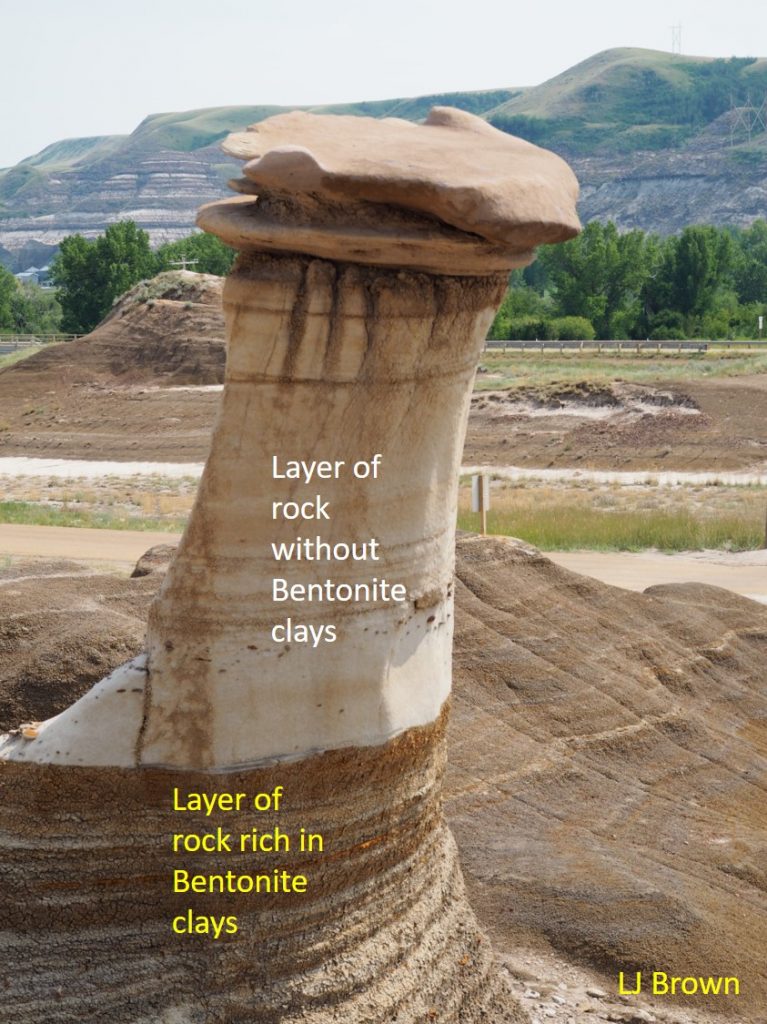6.2 Mechanical Weathering
Steven Earle and Laura J. Brown
Most rocks are formed deep beneath the Earth’s surface under completely different pressure and temperature conditions to those at the Earth’s surface. For example, intrusive igneous rocks form at depths of several hundreds of metres to several tens of kilometres. Sediments are turned into sedimentary rocks only after continued burial by additional sediments to depths more than several hundreds of metres. Most metamorphic rocks are formed at depths of kilometres to tens of kilometres. Weathering cannot even begin until these rocks are uplifted through various mountain-building processes—most of which are related to plate tectonics—and the overlying material has been eroded away. When rock is exposed at the surface, it is in disequilibrium with the surface environment. Weathering processes break down the rock into components more in equilibrium with the surface environment.
Mechanical or Physical Weathering is the breakdown of rock into smaller pieces due to heat, water, ice and pressure agents.
Weathering occurs in situ or without movement (Figure 6.3) and should not be confused with erosion! Erosion involves the entrainment and movement of sediment by water, wind or ice.

Figure 6.3. Mechanically weathered Ironstone surrounded by previously weathered rock debris.
The most important agents of mechanical weathering are:
- The decrease in pressure that results from the removal of overlying rock
- Freezing and thawing of water in cracks in the rock
- Formation of salt crystals within the rock
- Cracking from plant roots and removal of material by burrowing animals
When the erosion of the overlying rock exposes a mass of rock, there is a decrease in the confining pressure on the rock, and the rock expands. This unloading promotes cracking of the rock, known as exfoliation, as shown in the granitic rock in Figure 6.4., which peels off like the layers of an onion.


Granitic rock tends to exfoliate parallel to the exposed surface because the rock is typically homogenous, and it doesn’t have predetermined planes along which it must fracture. Sedimentary and metamorphic rocks, on the other hand, tend to exfoliate along predetermined planes (Figure 6.5).

Frost wedging, or freeze -thaw weathering, is a process by which water seeps into cracks in a rock; when the temperature drops and the water freezes, its volume expands ( up to 9%), exerting pressure, and enlarging the crack (Figure 6.6). Repeated freeze and thaw cycles eventually detach bits or slabs of rock. The effectiveness of frost wedging is related to the frequency of freezing and thawing. Frost wedging is most effective in a climate like Canada’s. In warm areas where freezing is infrequent, in very cold areas where thawing is infrequent, or in arid areas where there is little water to seep into cracks, the role of frost wedge weathering is limited. If you are ever hiking in the mountains, you might hear the effects of frost wedging when the Sun warms a steep rocky slope, and the fragments of rock that were pried away from the surface by freezing the night before are released as that ice melts.
In many parts of Canada, the transition between freezing nighttime temperatures and thawing daytime temperatures is frequent — tens to hundreds of times a year. Even in warm coastal areas of southern B.C., freezing and thawing transitions are common at higher elevations. A common feature in areas of effective frost wedging is a talus slope or talus cone —a fan-shaped deposit of fragments removed by frost wedging from the steep rocky slopes above (Figure 6.7).

A related process, frost heaving, occurs within unconsolidated materials on gentle slopes. In this case, water in the soil freezes and expands, pushing the overlying material up. Frost heaving is responsible for winter damage to roads all over North America.
Crystallization occurs when saltwater seeps into cracks or pores in rocks. When the water subsequently evaporates, the salts are left behind. Repeated cycles of saltwater deposits and evaporation result in the growth of salt crystals within cracks and pores in the rock. The growth of these crystals exerts pressure on the rock and can push grains apart, causing the rock to weaken and break. There are many examples of this on the rocky shorelines of Vancouver Island and the Gulf Islands, where sandstone outcrops are common and salty seawater is readily available (Figure 6.8). Salt weathering can also occur away from the coast because most environments have some salt in them.

Hydration, occurs when the clay minerals within a rock absorb water and expand. Expansion of common clay minerals (e.g. Na-Montmorillonite) can swell up to 1600%. Pressure and physical stress due to the increased volume of these wetted clays result in rock fracturing and flacking. The characteristic surface of rock subjected to hydration is rough and flakey, often described as a “popcorn” surface (Figure 6.9).

Figure 6.9 This Hoodoo is composed of bentonite-rich layers of rock at the bottom. You can see the rough “popcorn” surface caused by hydration. The smooth sandstone above has little or no bentonite in its composition, so it doesn’t experience hydration weathering. If you look closely, you can see another thin layer of rock subjected to hydration right below the caprock.
The effects of plants and animals are significant in mechanical weathering. Root wedging can break rock apart too. Roots can force their way into even the tiniest cracks, and then they exert tremendous pressure on the rocks as they grow, widening the cracks and breaking the rock (Figure 6.10). Although animals do not normally burrow through solid rock, they can excavate and remove huge volumes of soil and thus expose the rock to weathering by other mechanisms.

Mechanical weathering is greatly facilitated by the removal of weathered material, resulting in the exposure of more rock to weathering processes. A good example of this is shown in Figure 6.7. On the steep rock faces at the top of the cliff, rock fragments have been broken off by frost wedging and then removed by gravity. This is a form of mass wasting, which is discussed in more detail in section 6.6.
Exercise 5.1 Mechanical weathering
This photo shows granitic rock at the top of Stawamus Chief near Squamish, B.C. Identify the mechanical weathering processes that you can see or think will probably take place at this location.

Media Attributions
- Figures 6.4, 6.5, 6.6, 6.8, 6.10 and 6.11 : © Steven Earle. CC BY.
- Figures 6.3, 6.7, and 6.9: © Laura J. Brown. CC BY.

